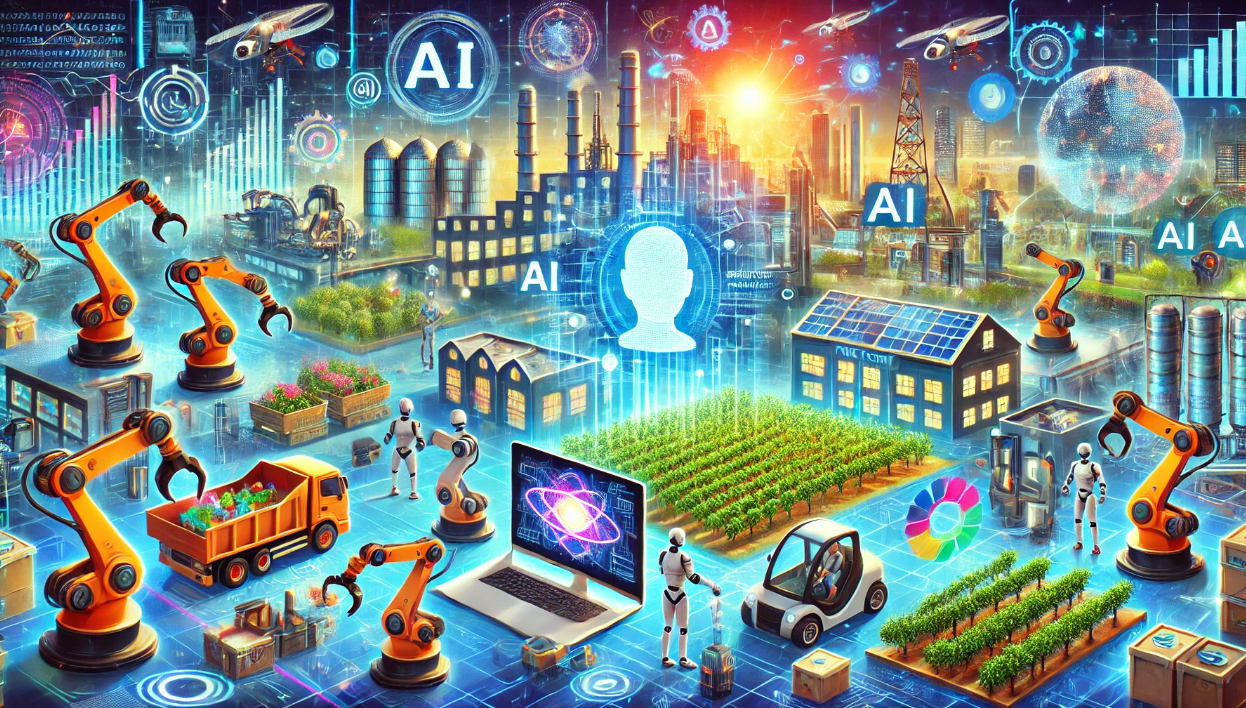Top 10 IT Trends Shaping 2025: What to Expect
The IT landscape in 2025 will be defined by breakthroughs in AI, quantum computing, edge computing, and cybersecurity. Businesses, developers, and tech enthusiasts must adapt to emerging technologies to stay competitive in an evolving digital world.
From AI-driven automation to next-gen cloud infrastructure, these top 10 IT trends will reshape industries, revolutionize cybersecurity, and accelerate digital transformation.
✅ In this guide, we’ll explore:
- Emerging technologies driving IT evolution
- How these trends impact businesses and consumers
- Future-proofing your IT strategy for 2025
Let’s dive into the top IT trends to watch in 2025!
Top 10 IT Trends Defining 2025
1️⃣ AI-Driven Automation & Next-Gen AI Models
Artificial intelligence (AI) is evolving from chatbots and virtual assistants to autonomous AI agents capable of managing business operations, customer interactions, and cybersecurity.
What’s Changing?
✔️ AI models like GPT-5 and Anthropic Claude will become more human-like in problem-solving.
✔️ AI-powered software development will reduce the need for coding.
✔️ Businesses will adopt AI-driven automation to cut costs and increase efficiency.
Example: AI will replace traditional call centers with intelligent virtual agents capable of handling complex queries.
2️⃣ Quantum Computing Enters Practical Use ⚛️
Quantum computing is transitioning from experimental research to real-world applications in finance, cryptography, and materials science.
What’s Changing?
✔️ Tech giants like IBM, Google, and D-Wave are racing toward quantum supremacy.
✔️ Quantum cryptography will redefine cybersecurity and data encryption.
✔️ Industries like pharmaceuticals will leverage quantum computing for drug discovery.
Example: JP Morgan is testing quantum computing for fraud detection and risk analysis.
3️⃣ The Rise of Edge Computing & 6G Networks
Edge computing is replacing traditional cloud models by bringing processing power closer to users, reducing latency, and improving real-time analytics.
What’s Changing?
✔️ The rise of 6G networks will support faster data transfer and low-latency AI applications.
✔️ Smart cities and IoT devices will rely on edge servers for real-time data processing.
✔️ Companies will move from centralized cloud models to hybrid edge-cloud solutions.
Example: Autonomous cars will use edge computing to process data instantly instead of relying on distant cloud servers.
4️⃣ Cybersecurity Evolution: AI-Powered Threat Detection ️
Cybersecurity is shifting from reactive to proactive AI-driven threat detection as cyberattacks become more sophisticated.
What’s Changing?
✔️ AI-based security will predict cyber threats before they occur.
✔️ Zero Trust Architecture (ZTA) will become the new security standard.
✔️ Biometric authentication & decentralized identity solutions will replace passwords.
Example: AI-driven XDR (Extended Detection and Response) will autonomously neutralize malware threats before they impact businesses.
5️⃣ Metaverse & Spatial Computing Take Off
The metaverse is evolving beyond gaming into business applications, virtual workplaces, and digital commerce.
What’s Changing?
✔️ Spatial computing will enable immersive AR/VR experiences in workplaces.
✔️ Businesses will invest in metaverse-based customer engagement.
✔️ Virtual offices & remote collaboration tools will enhance productivity.
Example: Companies like Meta, Microsoft, and Apple are launching metaverse workplaces for remote teams and business meetings.
6️⃣ AI-Powered Code Generation & Low-Code/No-Code Platforms
Software development is undergoing a major transformation with AI-assisted coding tools and low-code/no-code platforms.
What’s Changing?
✔️ AI models like GitHub Copilot & ChatGPT for coding will make software development faster & more efficient.
✔️ No-code platforms will allow non-developers to build applications.
✔️ Automated debugging & code optimization will reduce software errors.
Example: Startups will use no-code platforms like Bubble & Webflow to launch MVPs without hiring developers.
7️⃣ Blockchain Expansion: Beyond Cryptocurrencies
Blockchain is moving beyond Bitcoin and Ethereum into finance, supply chain, and digital identity management.
What’s Changing?
✔️ Decentralized Finance (DeFi) will revolutionize banking & lending.
✔️ Smart contracts will automate business processes across industries.
✔️ NFTs (Non-Fungible Tokens) 2.0 will enable real-world asset tokenization.
Example: Visa & Mastercard are launching blockchain-powered payment solutions to process global transactions faster.
8️⃣ AI-Driven Healthcare & Personalized Medicine
AI and biotech innovations will drive personalized medicine, real-time health monitoring, and drug discovery.
What’s Changing?
✔️ AI-driven diagnostics & robotic surgeries will improve healthcare outcomes.
✔️ Wearable health tech will provide real-time disease tracking.
✔️ Genomic data analysis will enable customized treatment plans.
Example: AI-based platforms like IBM Watson Health will assist doctors in diagnosing diseases with higher accuracy.
9️⃣ Sustainable & Green IT Solutions
The tech industry is shifting toward sustainable, energy-efficient computing to reduce carbon footprints.
What’s Changing?
✔️ Green data centers will rely on renewable energy sources.
✔️ AI will optimize energy consumption in IT infrastructure.
✔️ Companies will adopt carbon-neutral cloud computing solutions.
Example: Google & Microsoft are investing in sustainable AI and water-cooled data centers to reduce energy waste.
Hyper-Personalized Digital Experiences
AI-powered personalization is enhancing user experiences in eCommerce, entertainment, and digital services.
What’s Changing?
✔️ AI-driven content recommendations will dominate media platforms.
✔️ Voice & conversational AI will replace traditional user interfaces.
✔️ Emotion AI will analyze customer sentiment in real time.
Example: Netflix & Spotify will fine-tune AI recommendations based on user emotions & behavior tracking.
Final Thoughts: Preparing for the Future of IT in 2025
The next wave of IT innovation will be AI-driven, decentralized, and highly automated. To stay ahead, businesses must:
✅ Adopt AI-powered automation to increase efficiency.
✅ Prepare for quantum computing advancements in data security.
✅ Leverage edge computing & 6G networks for real-time applications.
✅ Invest in cybersecurity solutions to counter next-gen cyber threats.
✅ Explore blockchain for finance, healthcare, and supply chain innovations.
By staying ahead of these trends, businesses can future-proof their IT strategies and thrive in 2025 and beyond!

